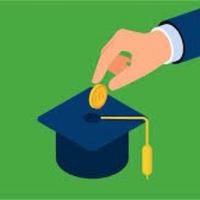Understanding the Role of RSI and PE Ratios in Identifying Breakout Stocks
Monday, Dec 23, 2024 8:20 pm ET
Introduction
Investing in the stock market can often feel like navigating a complex maze. With countless metrics to consider, it can be challenging to determine which stocks have the potential for significant growth. Two powerful tools that investors frequently use to identify breakout stocks are the Relative Strength Index (RSI) and Price-to-Earnings (PE) Ratios. These indicators provide insights into market trends and stock valuations, making them invaluable for making informed investment decisions.
Core Concept Explanation
Relative Strength Index (RSI): The RSI is a momentum oscillator that measures the speed and change of price movements. It ranges from 0 to 100 and is typically used to identify overbought or oversold conditions in a stock. An RSI above 70 suggests that a stock may be overbought, while an RSI below 30 indicates it may be oversold. This information helps investors spot potential reversal points in stock prices.
Price-to-Earnings (PE) Ratio: The PE ratio is a valuation measure that compares a company's current share price to its per-share earnings. A high PE ratio might indicate that a stock's price is high relative to earnings and possibly overvalued, while a low PE suggests it might be undervalued. Investors use PE ratios to assess whether a stock is fairly priced compared to its historical averages or other companies in the same industry.
Application and Strategies
Investors can use RSI and PE ratios in tandem to identify stocks poised for a breakout. For instance, a stock with a low PE ratio and an RSI rising from an oversold position could signal a potential buying opportunity. This combination suggests the stock is undervalued, and there's positive momentum building.
Strategy 1: Combining RSI with PE Ratios - Investors might look for stocks with a PE ratio lower than the industry average but with an RSI starting to climb from below 30. This setup indicates the stock might be undervalued and gaining positive momentum.
Strategy 2: Monitoring Overbought Conditions - A high PE ratio with an RSI above 70 could signal an overbought stock. Investors might consider selling or avoiding such stocks until the indicators suggest a price correction.
Case Study Analysis
Consider the case of XYZ Corp, a technology company that experienced a breakout phase in the past year. Initially, XYZ had a PE ratio significantly below the industry average, suggesting it was undervalued. At the same time, its RSI was below 30, indicating oversold conditions. Savvy investors who recognized this combination saw an opportunity, and as anticipated, XYZ's stock price began to climb. Over the next several months, the RSI gradually increased above 50, confirming the upward momentum, while the PE ratio started aligning with industry norms as the stock price rose.
Risks and Considerations
While RSI and PE ratios are useful tools, they come with inherent risks. Markets are influenced by a multitude of factors, and relying solely on these indicators can be misleading. For instance, a low PE ratio might reflect a company's underlying issues rather than a buying opportunity. Similarly, RSI can provide false signals during strong trends.
To mitigate these risks, investors should conduct comprehensive research, considering broader market conditions and industry-specific factors. Diversifying investments and maintaining a balanced portfolio are also essential strategies to manage risk effectively.
Conclusion
Incorporating RSI and PE ratios into your investment strategy can enhance your ability to identify breakout stocks and make more informed decisions. By understanding how these indicators work and applying them judiciously, investors can better navigate market trends and uncover opportunities. Remember, though, these tools are most effective when used in conjunction with thorough research and a robust risk management strategy.
Investing in the stock market can often feel like navigating a complex maze. With countless metrics to consider, it can be challenging to determine which stocks have the potential for significant growth. Two powerful tools that investors frequently use to identify breakout stocks are the Relative Strength Index (RSI) and Price-to-Earnings (PE) Ratios. These indicators provide insights into market trends and stock valuations, making them invaluable for making informed investment decisions.
Core Concept Explanation
Relative Strength Index (RSI): The RSI is a momentum oscillator that measures the speed and change of price movements. It ranges from 0 to 100 and is typically used to identify overbought or oversold conditions in a stock. An RSI above 70 suggests that a stock may be overbought, while an RSI below 30 indicates it may be oversold. This information helps investors spot potential reversal points in stock prices.
Price-to-Earnings (PE) Ratio: The PE ratio is a valuation measure that compares a company's current share price to its per-share earnings. A high PE ratio might indicate that a stock's price is high relative to earnings and possibly overvalued, while a low PE suggests it might be undervalued. Investors use PE ratios to assess whether a stock is fairly priced compared to its historical averages or other companies in the same industry.
Application and Strategies
Investors can use RSI and PE ratios in tandem to identify stocks poised for a breakout. For instance, a stock with a low PE ratio and an RSI rising from an oversold position could signal a potential buying opportunity. This combination suggests the stock is undervalued, and there's positive momentum building.
Strategy 1: Combining RSI with PE Ratios - Investors might look for stocks with a PE ratio lower than the industry average but with an RSI starting to climb from below 30. This setup indicates the stock might be undervalued and gaining positive momentum.
Strategy 2: Monitoring Overbought Conditions - A high PE ratio with an RSI above 70 could signal an overbought stock. Investors might consider selling or avoiding such stocks until the indicators suggest a price correction.
Case Study Analysis
Consider the case of XYZ Corp, a technology company that experienced a breakout phase in the past year. Initially, XYZ had a PE ratio significantly below the industry average, suggesting it was undervalued. At the same time, its RSI was below 30, indicating oversold conditions. Savvy investors who recognized this combination saw an opportunity, and as anticipated, XYZ's stock price began to climb. Over the next several months, the RSI gradually increased above 50, confirming the upward momentum, while the PE ratio started aligning with industry norms as the stock price rose.
Risks and Considerations
While RSI and PE ratios are useful tools, they come with inherent risks. Markets are influenced by a multitude of factors, and relying solely on these indicators can be misleading. For instance, a low PE ratio might reflect a company's underlying issues rather than a buying opportunity. Similarly, RSI can provide false signals during strong trends.
To mitigate these risks, investors should conduct comprehensive research, considering broader market conditions and industry-specific factors. Diversifying investments and maintaining a balanced portfolio are also essential strategies to manage risk effectively.
Conclusion
Incorporating RSI and PE ratios into your investment strategy can enhance your ability to identify breakout stocks and make more informed decisions. By understanding how these indicators work and applying them judiciously, investors can better navigate market trends and uncover opportunities. Remember, though, these tools are most effective when used in conjunction with thorough research and a robust risk management strategy.



_e45148e31749146201654.jpeg)





